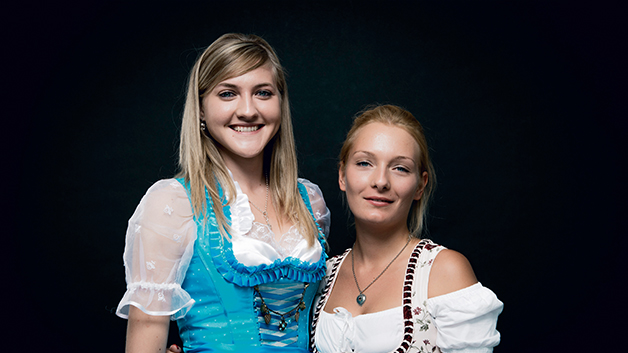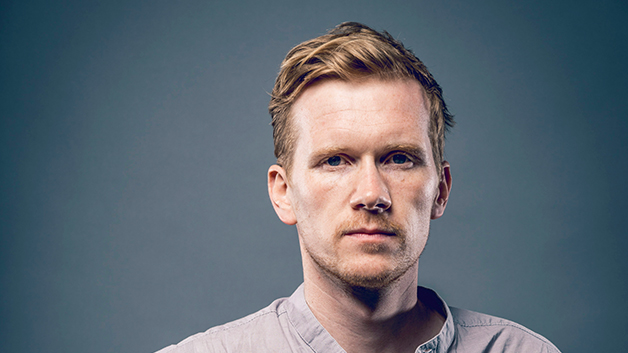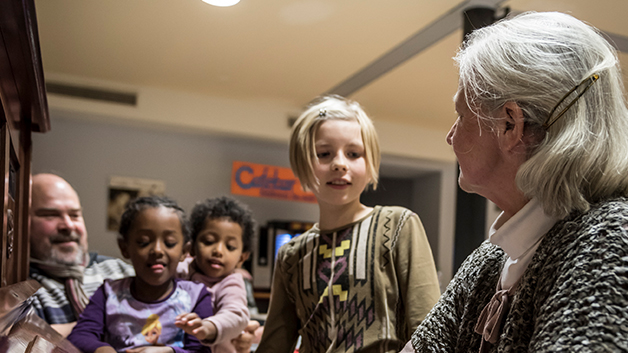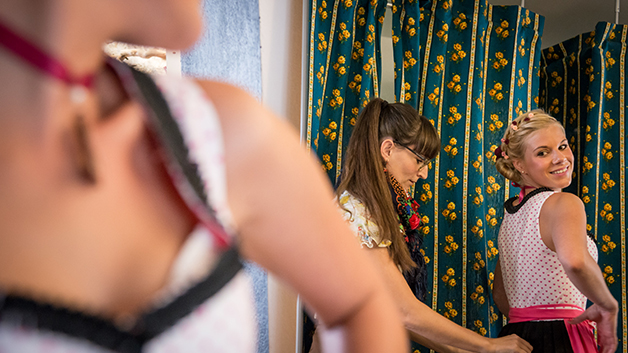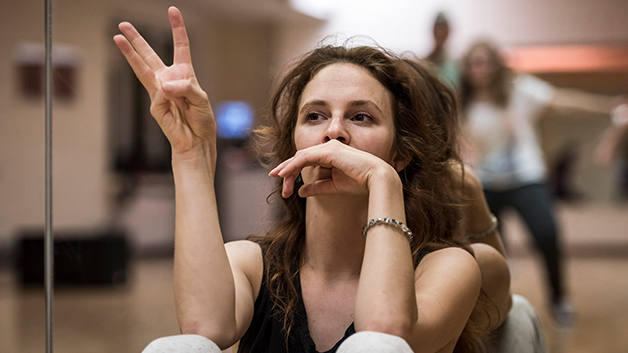
Welcome DAHOAM
The Free State of Bavaria: Land in the heart of Europe. Cosmopolitan. Fit for the future. One of a kind.
Bavaria is changing, but the special white-blue attitude to life remains. This includes: live and let live. This joy in diversity is at the heart of the proverbial „liberalitas bavariae“.
Live and let live.
If you ask a guest from abroad what they consider to be typical of Bavaria, their answer will most likely revolve around lederhosen and dirndl dresses, as well as beer and knuckle of pork. But there is a lot more to “typically Bavarian”.
More than 13 million people live in Bavaria. People from the regions of Altbayern (Old Bavaria), Franconia, Swabia and Sudeten Germans have made Bavaria the charming home state that it is, and have also turned it into a location with the best of opportunities. It is a great place to live and to work.
Bavaria is changing all the time, but always keeps its typical white-and-blue lifestyle: live and let live! Valuing diversity is the essence of the proverbial “liberalitas bavariae“.
„Servus und Grüß Gott!“ this is what Bavarian sounds like. Click, listen and speak it yourself.

Experiencing memories brings people together – the Dani Karavan memorial in the UNESCO World Heritage City of Regensburg.
Image: Kilian Schönberger
Together we are strong!
Her braided pigtail swings through the air like a lasso. Alysha skips through the dance hall to the sound of flute music. „She used to be really withdrawn“ her grandmother remembers. Things have been different ever since Alysha started dancing in the multi-generational house in Hassfurt.

The people living in this house support each other – with loving care. This is extended family living in a modern form: young and old learning from each other and with each other over four storeys.
Mothers come along with their babies to participate in a toddler group. Volunteers teach seniors how to use a computer or smartphone. It makes no difference where you are from: taking part in courses for learning German, music, arts and crafts, dancing – all of these activities unite families with and without a migration background.
„Together we are strong!“


,,Live and let live. It’s in Bavaria’s nature. Bavarians are conscious of tradition and down to earth. They love their home state, its landscapes, and its culture, and they’re not afraid to show it. ,,
Franz Beckenbauer (*1945, † 7. Januar 2024), Bavarian football legend and honorary president of FC Bayern München. Image: Tina Berning
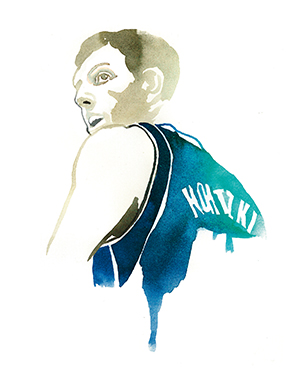
,,I grew up in Würzburg and know that my roots, a part of me, will always be in my home state of Bavaria. I return home for a few weeks every summer, and as soon as I step through the door, I am once again my young self, my parents’ son. My parents are down to earth. My mother still gives me pocket money when I’m in Würzburg. This is where I like to spend my time with friends and my family. ,,
Dirk Nowitzki (*1978), former basketball player in the United States professional basketball league NBA (source: Süddeutsche Zeitung, 2014: „Wochenend-Interview. Dirk Nowitzki über Bescheidenheit“ (Weekend interview. Dirk Nowitzki on modesty), SZ No. 205 of 06./07.11.2014.). Image: Tina Berning

Bavaria in figures
Population of Bavaria. Germany: 84,607,000 (as of September 2023) State capital (Munich): 1,505,814 (as of September 2023)
Around 41 percent of people over 14 years of age in Bavaria are active as volunteers – that’s almost one in two.
an area of 70,550 km², making it Germany’s largest state.
more than 200 lakes and 1,800 bodies of surface water
UNESCO World Heritage sites
cubic meters of wood are regrown annually in Bavarian forests
historical buildings and artistic monuments
Juergen Teller is one of the world’s most influential and style-defining photographers.
He captured Kate Moss in a wheelbarrow and put Victoria Beckham in a shopping bag. His shots of Kurt Cobain, Elton John and Björk are also world famous. Juergen Teller revolutionized fashion photography by searching for what it really means to be human instead of trying to create the appearance of perfection.
This specific style of capturing people just as they are may also have something to do with his background. Juergen Teller grew up in the Middle Franconian town of Bubenreuth, in a family that made violins. A dust allergy prevented him from carrying on the family tradition. He then embarked on new paths and went on to study photography in Munich.
Today, the Franconian himself is a global star and lives in London. Yet he still enjoys coming home to the place where he grew up. Between 2014 and 2019 Teller was a guest professor for photography at the Academy of Fine Arts in Nuremberg.
„Perfection bores me.“
Jürgen Teller
Fresh and trendy fashion – Bavaria is turning heads.

Christina Kronawitter has been wearing dirndls and lederhosen since she was at school. “Back then, they would all say: Whatever do you look like?!” Today, it is trendy and cool for young people in Bavaria to wear traditional outfits (Tracht). There is now a group of young fashion designers mixing Tracht with modern elements. Like Christina Kronawitter, who runs a store in the Lower Bavarian city of Landau on the river Isar. Bed linen, tablecloths and curtains all serve as material that she uses for her special designer pieces.
“There are no fixed rules about how to wear a dirndl”, the fashionista explains, “whether retro, romantic or with a touch of rock, I want to use my fashion to convey this special attitude towards life: Be cool, be Bavarian!“
Incidentally, the position where the dirndl’s bow is tied says quite a bit about the person wearing it; tied on the front left means “still available!”, tied on the front right says “already taken”.
„Be cool, be Bavarian!“
Christina Kronawitter
Dancing without hearing? Kassandra can.
A group of dancers stands in the mirror-walled hall. The music starts and their hip-hop moves effortlessly match up with the rhythm. How can anyone dance so masterfully without hearing the music?
At the age of three, Kassandra Wedel lost her hearing in a car accident, seven of her students are also hearing-impaired. “I feel the rhythm with my whole body. All you need is a good bass to carry the vibrations through the room.“ For 15 years now, Kassandra has been teaching hip-hop to both hearing-impaired students and hearing students. “Nikita“ is the name of her integrative dance group.
In 2001 the passionate hip-hop artist became the German national champion. In 2012 she was German national champion and vice world champion with the group “Nikita“, and in both the solo and duo performance Kassandra won the world champion title. “Dancing gives me a sense of freedom and self-confidence.” And it helps in overcoming prejudice. “Because dancing is a passion that connects us all.“ Since 2012 she has also been performing on stage as well as in film and television.
„I feel the beat in my belly!“
Kassandra Wedel

Everything is in flow
Kayaking to the town hall. Kayaking with the spectacular backdrop of a UNESCO World Heritage site: the Old Town of Bamberg.
Image: Steffen Egly




